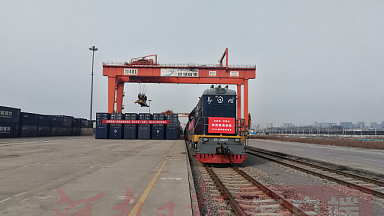«The mobility sector is an elementary building block for achieving Europe’s climate goals. As the largest European hinterland hub, we take our responsibility seriously to campaign for a comprehensive reduction in our industry emissions. We are active on a variety of levels»,
explained Duisport’s CEO Erich Staake. Estimations show that the project will cost around 185,000 euros in total, and its focus will have a long-term perspective regarding gas emissions.
State support and study focus
The North Rhine-Westphalia state will provide 50 per cent of the needed funds to realise the preliminary study for the switch to hydrogen locomotives. The regional parliament’s decision proves the German state’s overall loyalty to invest more in rail and transform its rail transport sector aiming for absolute sustainability.
The preliminary study by Duisport takes on the challenge to examine a long-term and comprehensive conversion to hydrogen-powered locomotives. In addition to a fundamental check for feasibility, the German hub will also carry out an analysis to determine whether it should retrofit existing vehicles or build entirely new ones.
Alexander Garbar, Deputy Head of Corporate Development and Strategy at Duisport, commented that «the starting signal is given for a unique study in a complex application area. With direct practical relevance, we, as the Port of Duisburg, can offer an elementary contribution to climate protection goals. The knowledge gained should also be made available to other ports and terminals».
Duisport and rail
In late February, Duisport presented its volume numbers for 2020, where rail freight was pivotal for reaching its set goals. Rail connections to and from China and the rest of Europe were critical for the German port since they helped break a record of container throughput.
Duisport is determined to using rail when it comes to cargo transhipment from its docks to other destinations. It is also determined to help rail freight grow since it recognises it as the future of sustainable transport.
For this reason, Duisport’s plans for 2021 is to strengthen its presence in rail transportation by shifting more traffic from road to rail, mainly from Eastern Europe. The facilities’ expansion measures combined with new partnerships in Logport VI with DSV and Maersk will most probably play a significant role in this sense. Together with the possible upgrade of locomotives, the German hub states clearly that it’s here to shape rail transport once and for all.



